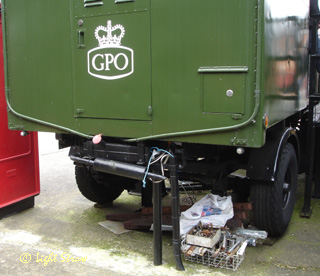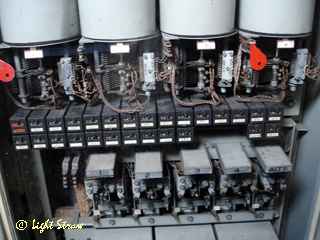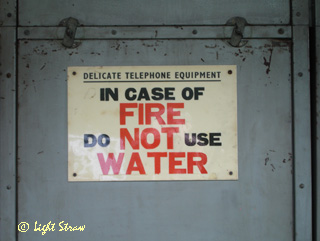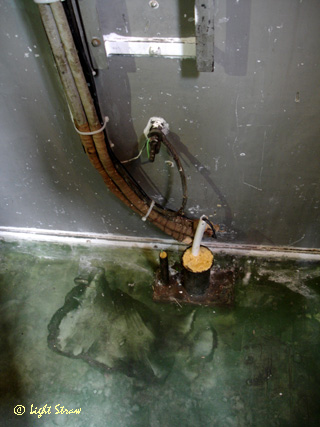 |
The Telephone Museum, Milton Keynes has a Mobile Automatic Exchange (MAX 12) No. 29 (T 9404) which was originally allocated to the North Eastern Region, of the General Post Office, in 1948. |
The very first Mobile Automatic eXchange (MAX) was brought into service in 1938 by the Postmaster General, Major G.C. Tryon, M.P. who made the inaugural call from Post Office Headquarters to the chairman of Essex County Council in Chelmsford. After the ceremony, the exchange was then put to work in North Weald, Essex where it replaced a small manual exchange.
The MAX no. 29 uses pre-2000 type two motion selectors, hence the half-round shaped equipment cans. The rack design is based upon the Unit Automatic eXchange (UAX) construction, i.e. self contained units. The trailer chassis was made by J. Brockhouse and Co. of West Bromwich.
MAX 29 was taken out of service on 16/03/1971 and was transported from BT's Ashford Stores Depot, to Milton Keynes in 1999.
 |
A section of one unit of the exchange. |
 |
Note the Battleship Grey equipment cans. |
 |
Notice: Delicate telephone equipment. |
 |
The old cotton-covered cabling has been retained for authenticity, while a new modern cable carries the pairs. |
Exchange log: MAX 29 - 30/4/51 then 25/2/52 installed at LANGCROFT - East Yorks from UAX 5. 44 lines + 4 B/W juncs to Duffield. 1956 to SKIPSEA.
All logos and trade marks are the property of their respective owners and are used on the Light Straw site(s) for review only. Students and researchers are recommended to make their own independent enquiries as to the accuracy of the information contained therein.